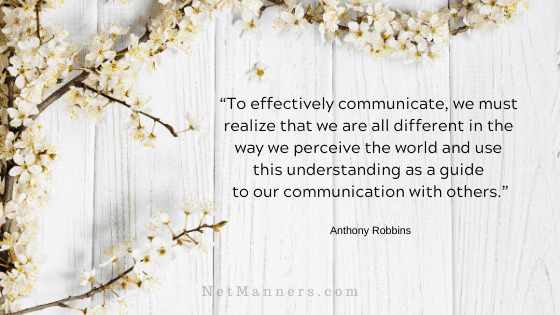The Subject: Field is for the Subject!

Proper Email Subject Field Use
A site visitor emailed me about a person they communicate with who puts the entire email content in the Subject: field. They use the Subject field for long-winded questions or statements. If you open the email — nothing is there.
What doesn’t this mean? What should we do!?
I communicate with a few folks who do this as well. Unfortunately, these folks tend to be technophobes or just lazy regarding their email use. For them, it is easier to type their question in the Subject: field and hit Send.
Now — imagine all that time saved not having to move your cursor to the body of the email. This reflects they also do not make an effort to use basic courtesies.
They can avoid all the keystrokes involved in typing a greeting, closing, or, let’s be honest — a coherent message. Sadly, this approach leads to misunderstandings and unnecessary emails that request clarification.
One could say that by not using the Subject: field correctly, you could be viewed as an email PIA. Are you okay with the impression that you are difficult to communicate with?
It’s Not Just About Being Lazy
When I discuss the Subject: field, some blow it off or think it to be a trivial issue. Is this viewed as the epitome of laziness?
Why would the sender be so resistant to doing things the right way? Well, they don’t call it the Message field — it’s the Subject field for a reason.
Let’s forget about proper use and courtesy for a moment. There are other negative ramifications of sending an email with no content in the body of the email.
Primarily, one will risk their emails getting blocked or sent to the Trash. This is because spammers send empty emails to check the validity of addresses on their lists. Blank messages are one of many spam filtering red flags that networks and software use to block suspicious emails.
So, is having your email get a red flag as spam or possibly land in the Trash an incentive to use the Subject: field correctly? For some, it may not be.
By placing content where it does not belong, these folks risk their emails not getting through or responded to. Coincidentally these are the same folks that are upset when they do not receive a reply because their message is spammy and blocked and therefore not read.
Short and Sweet Rules the Day
The Subject: field should include a brief and concise description of the contents of the email — not the entire message. That’s what the Subject field’s purpose is and how email works.
sub?ject | n: that which forms a basic matter of thought, discussion, investigation, etc.: a subject of conversation
Here are some Subject field examples:
You get the idea! A handful of words that intimate what the content of the email is about.
Using the Subject field properly is just one part of Email Etiquette. Making this effort shows you want to ensure communicating with you is a pleasant experience.
Subject Fields Matter
Now that you know the right way to use the Subject field, be sure to use it properly. You don’t want to be seen as showing a total disregard for understanding technology, do you?
However, if you continue to disregard the proper use of the Subject field, don’t be surprised if those you email (after cringing when seeing your name in their inbox) may choose (if your email is not blocked as spammy) not to reply.






